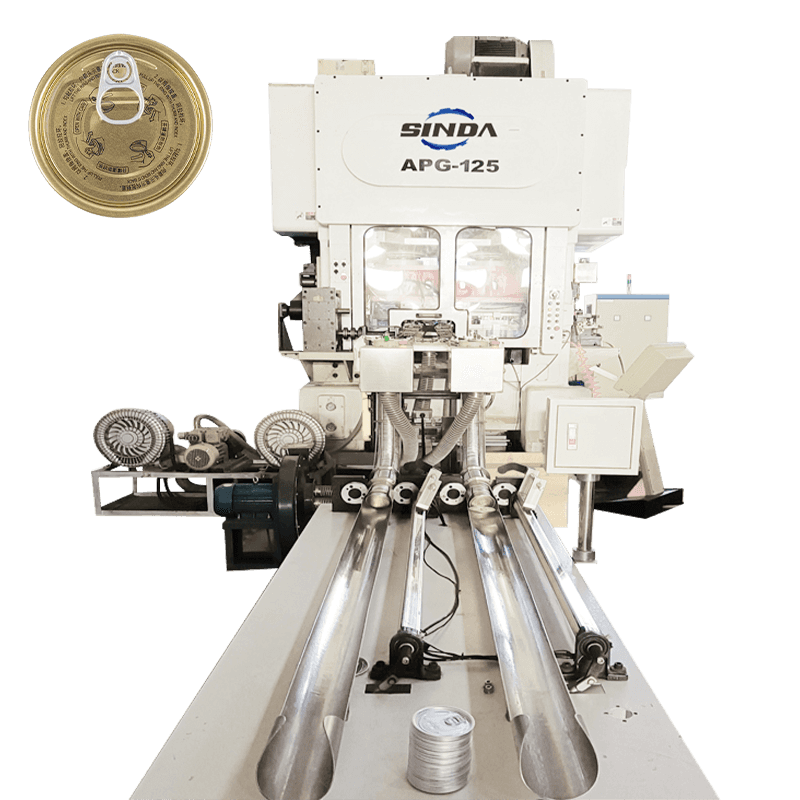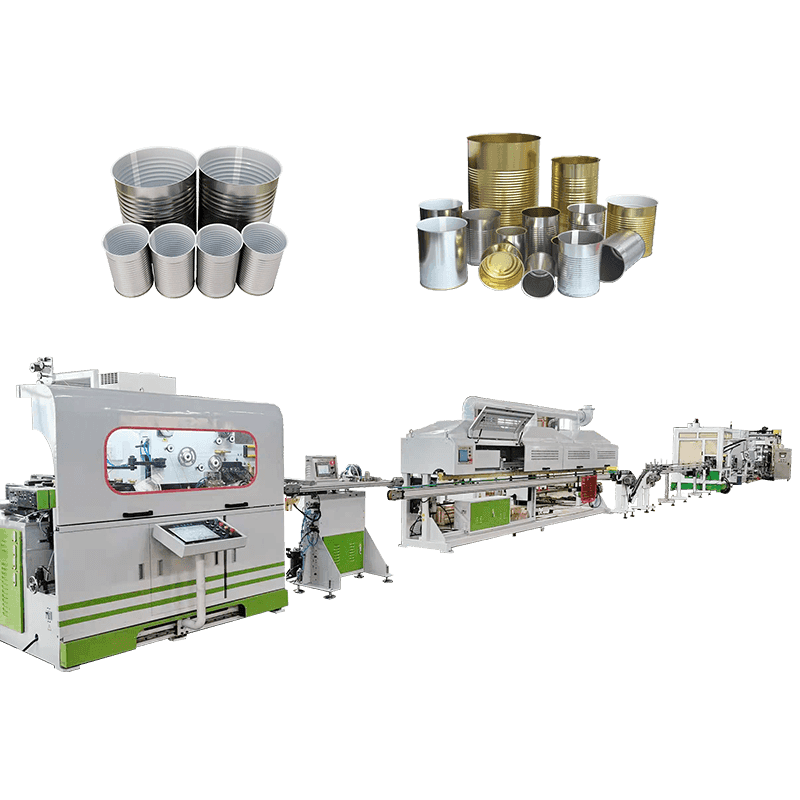Equipment precision control is the foundation
The precision of the core equipment of the tin can production line, such as stamping machines, forming machines, welding equipment, etc., directly determines the dimensional stability of the tin can. The production line uses high-precision CNC equipment to ensure accurate positioning of each process.
*Mold manufacturing precision: The mold is an important tool for tin can production, and its manufacturing precision needs to be strictly controlled. High-strength mold steel is used, and after precision processing and heat treatment, the mold shape is guaranteed to be stable and wear-resistant. The precision of the mold directly affects the size and shape of the stamping parts.
*Equipment rigidity and stability: The mechanical structure design of the equipment focuses on rigidity and vibration reduction, reduces mechanical deformation during processing, and maintains repetitive accuracy in continuous production. Equipment maintenance is in place, which also helps to maintain the processing accuracy of the equipment.
*Application of CNC system: Using CNC technology, the molding process is accurately adjusted and controlled in real time to improve processing consistency and reduce human errors.
Strict control of process parameters
Tin can molding involves multiple links such as stamping, drawing, welding, and shaping. The process parameters of each step have a great influence on the size of the finished product.
* Stamping pressure and speed: The pressure and speed during stamping need to be accurately set according to the material properties and mold design. Insufficient or excessive pressure may cause deformation or dimensional deviation.
* Drawing process parameters: Drawing is a key process in tin can forming, involving plastic deformation of the material. Reasonable drawing ratio and mold gap, combined with accurate drawing speed, can effectively reduce material rebound and deformation, and ensure accurate size.
* Welding parameter adjustment: The temperature, pressure and time during the welding process must be strictly controlled to avoid the weld being too tight or too loose, and ensure the sealing and dimensional stability of the tin can.
* Cooling and rebound control: During the cooling process after the tin can is formed, the material may rebound. Reasonable design of cooling methods and process flow can reduce the impact of rebound on size.
Online detection and feedback adjustment
Modern tin can production lines are equipped with a variety of detection equipment to monitor the size and shape of tin cans in real time, detect abnormalities in time, and ensure product consistency.
* Visual inspection system: Through high-speed cameras and image processing technology, detect surface defects and dimensional deviations of tin cans, and remove unqualified products in time.
*Laser measuring instrument: Use laser scanning to measure the key dimensions of tin cans to achieve high-precision dimensional control.
*Automatic feedback adjustment: The detection data is fed back to the production control system to automatically adjust the process parameters, such as punching pressure, drawing speed, etc., to achieve dynamic optimization.
Material selection and control
The quality and uniformity of raw materials also have an important impact on the forming accuracy of tin cans.
*Material specification consistency: Use standardized tin plate materials with uniform thickness and stable composition to reduce dimensional fluctuations caused by material differences.
*Material pretreatment: Carry out necessary pretreatment such as cleaning and annealing to improve the plasticity and processing properties of the material and reduce the risk of deformation.
*Material storage management: Store materials reasonably to avoid moisture and contamination, and keep the material properties stable.
Operator skill training
Although modern production lines tend to be automated, the skills and experience of operators are still important factors to ensure forming accuracy.
*Process training: Regularly train operators in process parameter adjustment, equipment operation and quality control to improve the standardization and accuracy of operations.
*Abnormal handling ability: Cultivate the ability of operators to quickly discover and handle production abnormalities to avoid large-scale quality fluctuations due to small problems.
*Teamwork: Production, quality inspection, equipment maintenance and other departments work together to form a closed-loop management to ensure timely feedback and resolution of problems.
Maintenance and regular calibration
The normal operation of the equipment is the prerequisite for ensuring the consistency of the tin can size.
*Regular equipment maintenance: Regularly check the mechanical parts, lubrication system and control system to prevent the equipment from affecting the processing accuracy due to wear or failure.
*Mold maintenance and replacement: Mold wear will cause molding size deviation, which needs to be regularly inspected and repaired or replaced.
*Equipment calibration: Regularly calibrate key equipment and measuring instruments to ensure the accuracy of data and processing.

 English
English عربى
عربى русский
русский




